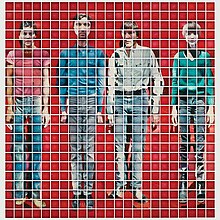More Songs about Buildings and Food
| More Songs About Buildings and Food | ||||||||||
|---|---|---|---|---|---|---|---|---|---|---|
 |
||||||||||
| Studio album by Talking Heads | ||||||||||
| Released | July 7, 1978 | |||||||||
| Recorded | March–April 1978 | |||||||||
| Studio | Compass Point Studios in Nassau | |||||||||
| Genre | ||||||||||
| Length | 41:32 | |||||||||
| Label | Sire | |||||||||
| Producer |
|
|||||||||
| Talking Heads chronology | ||||||||||
|
||||||||||
| Professional ratings | |
|---|---|
| Review scores | |
| Source | Rating |
| AllMusic | |
| Chicago Tribune | |
| Christgau's Record Guide | A |
| Encyclopedia of Popular Music | |
| Rolling Stone | |
| The Rolling Stone Album Guide | |
| Spin Alternative Record Guide | 9/10 |
| Uncut | |
More Songs About Buildings and Food is the second studio album by the American rock band Talking Heads, released in July 1978. The album was the first of three Talking Heads LPs produced by collaborator Brian Eno, and saw the group move musically toward a danceable style, crossing singer David Byrne's unusual delivery and lyrical concerns with a new emphasis on the rhythm section made up of bassist Tina Weymouth and drummer Chris Frantz.
The album established the group as a critical success, reaching 29 in the US Billboard Pop Albums chart and 21 in the UK Albums Chart. The album featured the group's first Top 30 single, a cover of Al Green's "Take Me to the River."
More Songs About Buildings and Food was released on July 21, 1978. It peaked at number 29 on the Billboard Pop Albums chart. The album's one single, a cover of the Al Green hit "Take Me to the River", peaked at number 26 on the pop singles chart in 1979. The single pushed the album to gold-record status.
The album was ranked at No. 4 among the top "Albums of the Year" for 1978 by NME, with "Take Me to the River" ranked at No. 16 among the year's top tracks. In 2003 the album was ranked number 382 on Rolling Stone magazine's list of the 500 greatest albums of all time. In 2006 it was ranked the 45th best album of the 1970s by Pitchfork Media. It was ranked number 57 on Rolling Stone magazine's list of the greatest albums of 1967–1987.
...
Wikipedia
